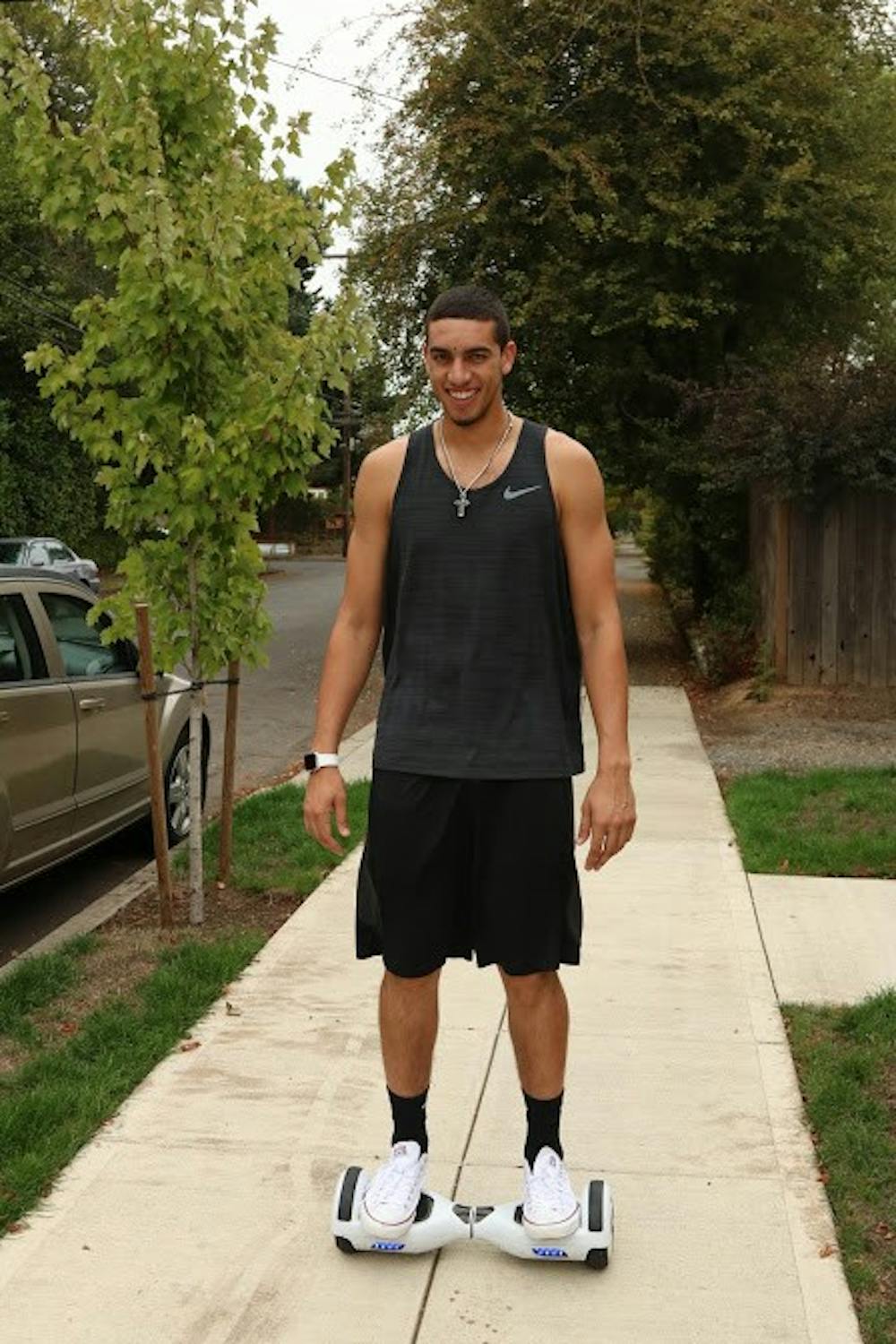by Ryan Myers |
Whether it’s about the destination or the journey itself, students have to get around campus. When speed, efficiency and identity are involved, students find a wide variety of methods to get where they are going. For some students, their method is simply faster than walking, and for others it’s a way to keep a piece of home in their lives as they adjust, or readjust, to life at UP.
Sophomore Drake Fukushima prefers the speediness of biking rather than walking to campus. Fukushima hasn’t had any safety issues and said that the biggest drawback of biking to campus is finding a place to lock it, pointing out that many other students ride their bikes. This can mean competition for bike rack space around hot spots of traffic.
To some, their transportation method doubles as a part of their identity. Junior Raychel Teman rides her skateboard around campus and the surrounding neighborhood. She has been riding for about 10 years on and off. She also likes to share her interests with others in the community.
“There is this program at the skatepark where they teach girls, and I went and helped out last weekend,” Teman said.
Some favor their mode of transportation because of its functionality. Freshman Derek Lorenzo rides a 22-inch “cruiser” board around campus, compared to the typical average board length of about 30 inches. He has been riding since his early childhood. Lorenzo explained that it is a faster way to get where he needs to be, with enough hills on campus to maintain speed on his way.
“I ride this size rather than the longboard because it’s more maneuverable and it’s easier to carry,” Lorenzo said.
Many students see the need to share the walkways on campus safely.
“I tend to give the right of way to people walking,” Lorenzo said.
Some students use their transportation method because of its contemporary appeal, as well as practical benefits to their lives. Sophomore Erik Edwardson, owner of a self-balancing hover scooter, gets around in a more modern way.
“I use this mode of transportation mainly to get across campus from Schoenfeldt to The Commons, as it saves a lot of time,” Edwardson said. “Also, being an athlete, it saves a bit of wear and tear on my legs after I train or play a game!”
There are also drawbacks to the hover scooters, as with skateboards and other modes of transportation, being that they have to be carried when not in use.
“I have to carry it everywhere when I'm not riding it and it is surprisingly heavy!” Edwardson said.
Edwardson also added his voice to the chorus of others stressing caution as students travel, no matter the method.
“You definitely need to be cautious on the board just as you would on a bike,” Edwardson said.
Director of Public Safety Gerald Gregg emphasized the need for everyone to be mindful, pointing out that campus is a “mixed use” area.
“Especially on campus, people need to just slow down and take that extra second,” Gregg said. “At this point, everyone seems to be coexisting and working well together.”
Gregg likened the mix of cars, pedestrians and those using alternative transportation on campus to traffic situations that he has encountered as a police officer. Gregg is a cyclist himself, making the issue of safety both personally and professionally relevant to him.
Gregg’s sentiment is one which is shared by many, students included. He urged that vigilance, mindfulness and safety are key factors in sharing the campus between all types of travelers, from the conventional to the creative.
Ryan Myers is a reporter for The Beacon. He can be reached at myersr17@up.edu.








